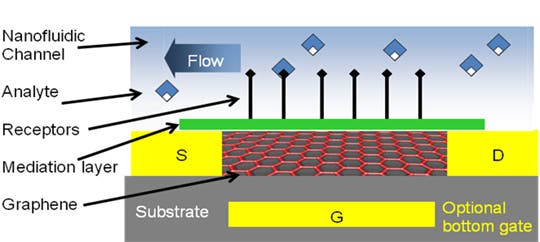Remember this name: graphene. This wonder material is certainly on a lot of scientists’ lips these days, but in a few years from now, it will be on the lips of more and more people, as its fantastic properties will begin to be put to practical use.
Graphene is a planar sheet of Carbon, just one atom thick, densely packed in a honey comb structure. Recently, a new study from the Rensselaer Polytechnic Institute showed how graphene behaves much better than leading commercial gas sensors in detecting potentially dangerous and explosive chemicals, thus paving the way for a new generation of gas sensors to be used in various environmental and industrial settings, as well as by bomb squads, law enforcement officials, defense organizations.
The new sensor made out of a continuous graphene nanosheets grown in a foam like structure successfully and repeatedly measured ammonia (NH3) and nitrogen dioxide (NO2) at concentrations as small as 20 parts-per-million. The graphene sensor is about as big as a postal stamp.
“We are very excited about this new discovery, which we think could lead to new commercial gas sensors,” said Rensselaer Engineering Professor Nikhil Koratkar, who co-led the study along with Professor Hui-Ming Cheng at the Shenyang National Laboratory for Materials Science at the Chinese Academy of Sciences. “So far, the sensors have shown to be significantly more sensitive at detecting ammonia and nitrogen dioxide at room temperature than the commercial gas detectors on the market today.”
This is a breakthrough not only from a practical point of view, but Koratkar and his students made a significant breakthrough in nanotechnology itself.
“In a sense we have overcome the Achilles’ heel of nanotechnology for chemical sensing,” Koratkar said. “A single nanostructure works great, but doesn’t mean much when applied in a real device in the real world. When you try to scale it up to macroscale proportions, the interfaces defeats what you’re trying to accomplish, as the nanostructure’s properties are dominated by interfaces. Now we’re able to scale up graphene in a way that the interfaces are not present. This allows us to take advantage of the intrinsic properties of the nanostructure, yet work with a macroscopic structure that gives us repeatability, reliability, and robustness, but shows similar sensitivity to gas adsorbtion as a single nanostructure.”
Picture source










